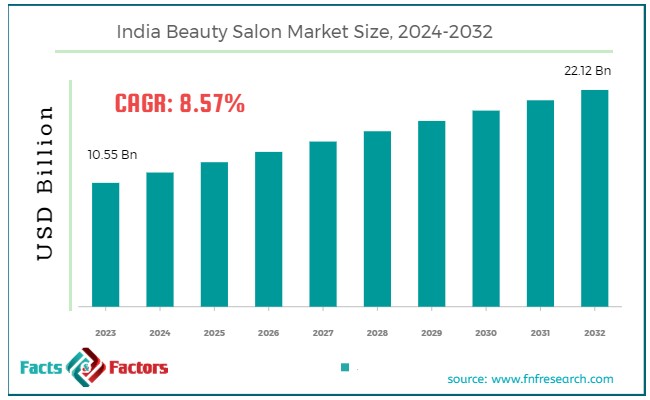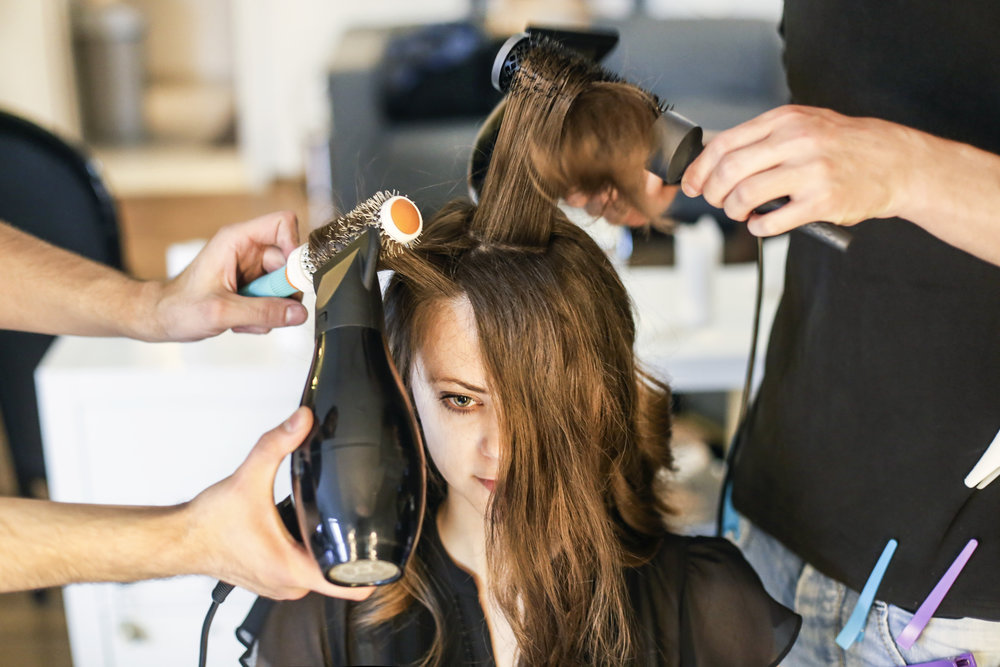The India Beauty Salon Market is currently valued at USD 10.8 billion, driven by growing consumer interest in personal grooming, wellness, and an evolving beauty culture. As the country experiences significant shifts in consumer behavior, this market is poised for further growth. Here’s a detailed overview of the factors shaping this booming industry and what lies ahead for salon businesses.
Key Factors Fueling Market Growth
Several trends are contributing to the rapid expansion of the Indian beauty salon sector:
- Rise of the Middle Class & Workforce Participation: India’s expanding middle class and increasing participation of women in the workforce have created a surge in demand for beauty services. This growing disposable income and the shift towards professional grooming services are contributing to the rise in salon visits.
- Influence of Social Media & Celebrity Endorsements: Social media platforms and celebrity endorsements have dramatically increased awareness of skincare, haircare, and overall wellness. As a result, consumers are more focused than ever on their appearance, boosting the demand for salon services.
- Urbanization & Premium Services: Major cities like Mumbai, Delhi, and Bangalore dominate the market due to their high population density, affluent consumers, and the presence of high-end salon chains. Rapid urbanization and the cosmopolitan nature of these cities have significantly driven the demand for premium salon services.
Key Market Segments

The India Beauty Salon market is diverse, segmented by service type and end-user demographics.
- By Service Type: The market is primarily divided into three key segments—Hair Care, Skin Care, and Nail Care. Hair care continues to dominate due to the cultural importance of hair grooming and the rise in popularity of chemical treatments like keratin, smoothening, and coloring. Skin and nail care also remain essential due to increasing consumer awareness of skincare regimens and nail aesthetics.
- By End-User: Women dominate the market, driven by the vast range of services available to them. However, the male segment is growing steadily as more men seek professional grooming services.
Market Growth Drivers
Several factors are fueling the growth of the India Beauty Salon Market:
- Increased Female Workforce Participation: As of 2024, over 432 million women are employed in India. With more disposable income and a focus on grooming, women are increasingly seeking salon services, significantly contributing to market expansion.
- Health-Consciousness & Grooming Awareness: There is a rising awareness of health and wellness among Indian consumers. Over 240 million people are actively engaging in personal grooming and wellness practices, leading to a surge in demand for skin therapies, organic beauty services, and anti-aging treatments.
- Expansion of Organized Salon Chains: The market is seeing the expansion of organized salon chains, such as Lakmé Salon and Naturals, in tier II and tier III cities. As of 2024, over 13,000 organized salons operate across India, helping to standardize the services and raise service quality.
Market Challenges
Despite significant growth, the beauty salon market faces several challenges:
- Shortage of Skilled Beauty Professionals: India is facing a shortage of over 1.2 million trained beauty professionals. This gap in skilled labor hampers the expansion and service quality of beauty salons, creating a need for well-trained professionals.
- Regulatory & Taxation Hurdles: The beauty industry in India is burdened by complex regulatory environments, including labor laws and Goods and Services Tax (GST). The financial strain from high taxes particularly impacts smaller, independent salons.
Future Outlook and Opportunities
Looking forward, the India Beauty Salon Market is expected to see continued growth, with several key trends shaping its future:
- Rural Market Expansion: The beauty salon market is set to expand significantly into rural areas. By 2029, over 180,000 rural salons are projected to operate, up from 110,000 in 2024. Government initiatives and rising awareness are making professional grooming services more accessible to people in tier III and rural regions.
- Sustainability and Eco-Friendly Services: Consumer demand for sustainable and eco-friendly beauty services is expected to grow rapidly. By 2029, over 50,000 salons are likely to offer eco-friendly treatments, driven by consumer preferences for organic, non-toxic, and cruelty-free beauty products.
- Technological Integration: As digital engagement continues to rise, the integration of technology in the beauty salon industry will be essential. Online bookings, virtual consultations, and digital marketing are becoming crucial for salons to stay competitive and engage with a tech-savvy consumer base.
- Here are the benefits of using salon and spa management software for your business
Conclusion
The India Beauty Salon Market is evolving at an impressive rate, driven by urbanization, an expanding middle class, and the growing focus on wellness and self-care. As salons adapt to these changes and leverage new opportunities—particularly in rural markets and sustainability—they can position themselves for long-term growth and success. With a focus on quality services, innovation, and sustainability, the future looks promising for beauty salon businesses in India.

